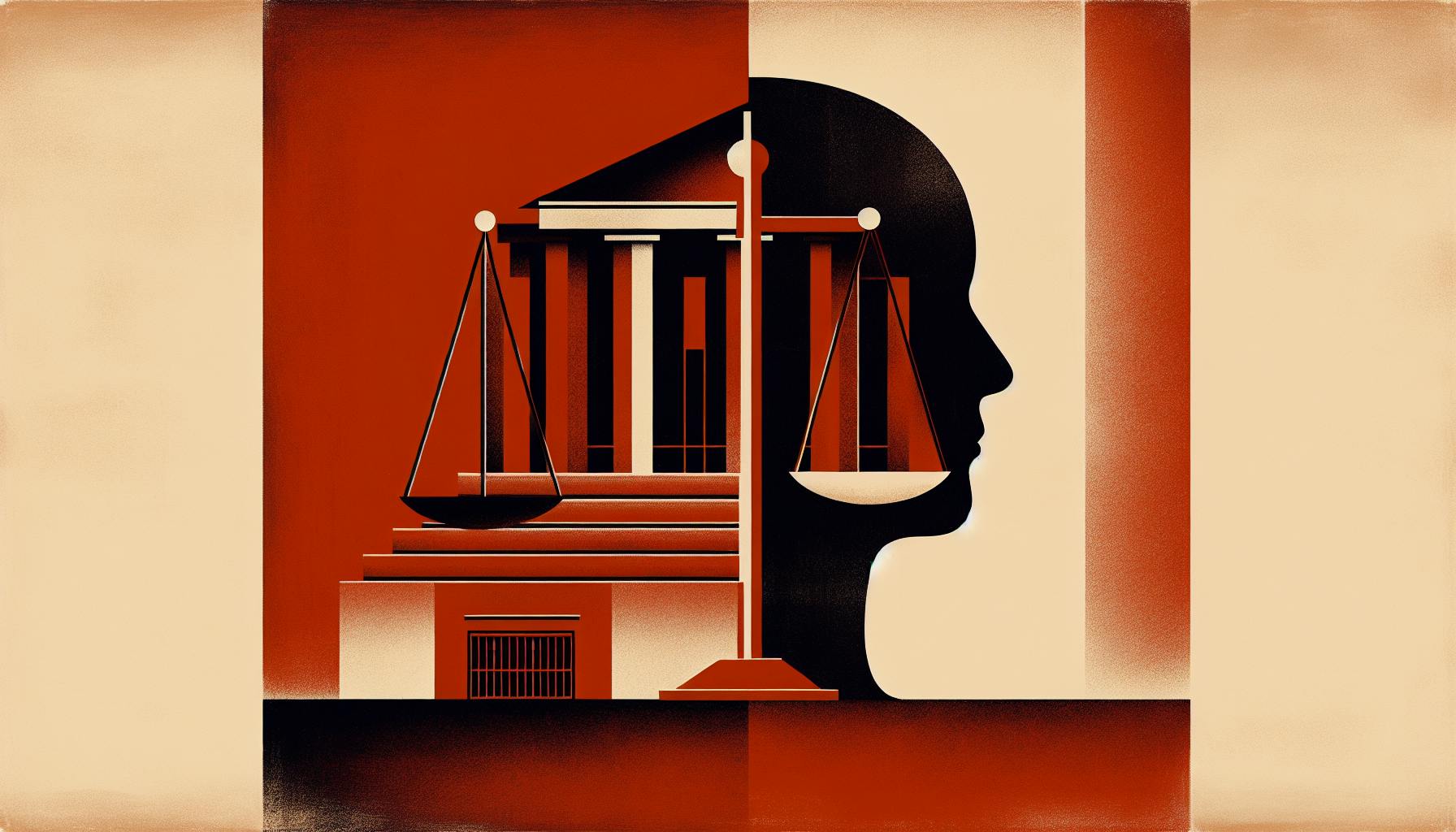Most legal professionals would agree that understanding complex legal terminology can be challenging.
But having a solid grasp of concepts like "en banc" is critical for legal practitioners and law students alike.
In this post, we will clearly define the en banc concept, explain its origins and modern usage, outline the criteria for granting an en banc review, describe the appeal process, highlight noteworthy cases, and weigh the potential benefits against the costs.
Introduction to En Banc: A Legal Concept Explained
The term "en banc" refers to cases heard or reheard by the full bench of judges in an appellate court. It comes from the French phrase "en banc," meaning "on the bench," referring to all judges sitting together to hear a case.
Defining 'En Banc' in the Legal Landscape
En banc is a legal procedure that allows an appellate court to rehear a case as a full bench, rather than by a panel of judges. Typically, appeals courts hear cases in panels of three judges. En banc review allows all the judges in that circuit to reexamine a panel's decision.
The term "en banc" translates literally to "on the bench" in French. It refers to the full bench of judges sitting to hear a case together, rather than the usual panel of three judges.
Historical Origins of the En Banc Concept
The concept of en banc originated in French law, where full benches would gather for cases involving the most important legal issues.
In English common law tradition, en banc hearings trace back even further. In early English courts, all available judges would sit together on the Exchequer's long bench to hear cases.
So the term "en banc" has origins in historical legal systems where full benches ruled on pivotal cases. The tradition continues today in the modern US appellate system.
En Banc in the Modern Appellate System
In United States appellate courts, en banc refers to when all the circuit judges in a particular circuit rehear a case as a full bench.
The Federal Rules of Appellate Procedure allow courts to hear cases en banc to maintain uniformity in decisions or rehear cases involving questions of exceptional importance. Parties in a case can also petition the court to rehear a case en banc.
Rehearing cases en banc allows the full appellate bench to reconsider panel decisions and maintain consistency across their circuit's case law. The Supreme Court also gives stronger consideration to en banc decisions. So it remains an important legal procedure.
What does en banc mean in legal terms?
En banc is a legal term derived from French meaning "on the bench." It refers to when all of the judges of an appellate court hear an appeal, as opposed to the standard practice of hearing cases in panels of three judges.
When a federal appeals court considers a case en banc, it means all active circuit judges in that circuit will hear the case. En banc review allows the full court to reconsider a panel decision that the court feels warrants further review. According to the Federal Rules of Appellate Procedure, en banc hearings are disfavored and ordinarily will not be ordered unless necessary to secure uniformity or involves a question of exceptional importance.
En banc review can be used to rehear a case already decided by a three-judge panel. It may also be used upfront for significant cases. Reasons for granting an en banc rehearing include resolving intra-circuit conflicts, addressing issues of exceptional importance, or maintaining uniformity of decisions within the circuit.
The process for petitioning for rehearing en banc varies by circuit. Generally, it requires a majority vote of active judges. If the vote succeeds, all active judges on the court will rehear the case, unless a judge has a conflict of interest.
What is the definition of in banc?
The term "in banc" refers to court cases heard before the full bench of judges in an appellate court, rather than the typical panel of three judges.
Specifically, "in banc" means:
- With all the judges of a court present
- As a full court
- A hearing in banc
In the United States court system, federal appeals courts (also called circuit courts) have the option to expand a case's panel of judges to include all judges in that circuit, which essentially means rehearing the case "in banc" before the full court.
The rules allowing courts to rehear cases en banc are outlined in the Federal Rules of Appellate Procedure and allow a majority of circuit judges to order a rehearing en banc. Rehearings en banc are relatively rare, used only for significant cases involving complex legal questions or circuit splits where different appeals courts have issued contradictory rulings on the same matter of law.
Some key details on en banc procedures:
- En banc review can help resolve splits between different circuit court rulings
- The Seventh, Ninth, and Fifth Circuits are more likely to grant en banc reviews
- U.S. Supreme Court judges often pay close attention to en banc rulings when considering hearing a case
So in summary, "in banc" refers to important appellate cases heard before the full bench of appeals court judges, rather than just a three-judge panel.
What does Enbank mean?
In law, an en banc session (pronounced [ɑ̃ bɑ̃]; also known as in banc, in banco or in bank) refers to a session where a case is heard before all the judges of an appeals court, rather than by a smaller panel.
Some key things to know about en banc review:
-
En banc review allows all the judges on a Federal appeals court (e.g. Seventh Circuit, Ninth Circuit) to rehear a case that was previously decided by a three-judge panel. This provides an opportunity to reconsider the panel's decision.
-
The Federal Rules of Appellate Procedure provide the procedures for hearing cases en banc. Generally, a majority vote of the active circuit judges is required to hear a case en banc.
-
En banc review is fairly rare - courts prefer decisions by rotating three-judge panels. But it may be granted for cases involving complex or exceptional issues of law, or to maintain uniformity of the court's decisions.
-
Some famous en banc cases include landmark civil rights cases like Brown v. Board of Education and key cases interpreting the Foreign Intelligence Surveillance Act (FISA) before the FISA Court.
So in summary, an en banc session allows all judges on an appeals court to rehear a case, which is an exceptional procedure used for complex legal issues or to harmonize circuit law.
What is the difference between panel and en banc?
A panel rehearing refers to when only the three-judge panel that originally decided a case reconsiders that case. In contrast, a rehearing en banc refers to when the full court, or a larger panel of judges, reconsiders the case.
Some key differences between panel and en banc rehearings:
-
Panel: Only includes the 3 judges from the original panel. An appeal for a panel rehearing is easier to obtain than an en banc rehearing.
-
En Banc: Includes all active circuit judges or a larger panel of judges (typically 11-15 judges). More difficult to obtain than a panel rehearing.
-
To grant an en banc rehearing, a majority of active circuit judges must vote in favor. En banc rehearings resolve intra-circuit splits and issues of exceptional importance.
So in summary, an en banc rehearing engages more judges to reconsider a case deemed exceptionally significant. It aims to resolve conflicts between different circuit rulings. A panel rehearing has a lower threshold and only re-engages the original 3-judge panel.
Understanding the En Banc Court of Appeals
The en banc court of appeals is a unique legal proceeding where all active judges on an appellate court participate to reconsider a case previously decided by a smaller panel of the court's judges. This full bench review allows the entire appellate court to overturn precedent and establish binding authority over lower courts within its jurisdiction.
Full Bench Participation in En Banc Hearings
All active and eligible judges on a U.S. Court of Appeals participate in an en banc hearing. This creates an expanded judicial panel that allows the full appellate court to review decisions seen as exceptionally important. For example, the Ninth Circuit Court of Appeals has 29 active judges who could potentially hear a case en banc. This allows the full breadth of the court's experience and judicial philosophy to shape consequential rulings.
Reconsideration of Panel Decisions by the Full Court
En banc review provides a pathway for the full circuit court to reconsider and potentially overturn earlier rulings made by a 3-judge panel of that court. This allows precedent from a smaller panel to be overturned when deemed sufficiently significant or erroneous. The en banc process acts as a check and balance on earlier panel decisions.
The Rarity of En Banc Review
Given the substantial judicial resources involved, en banc review is infrequently granted. Typically less than 1% of cases decided by the U.S. Courts of Appeal are reheard en banc. The process is reserved for appeals raising exceptionally important legal questions or where a serious intra-circuit split exists. While rare, it remains an influential avenue to challenge and shape legal precedent.
sbb-itb-585a0bc
Criteria for Granting a Rehearing En Banc
Discussion of the types of cases and situations where en banc consideration occurs.
Resolving Inconsistent Precedents En Banc
En banc may be granted when prior rulings from the court conflict on the same legal issue. For example, if two previous panel decisions from the Ninth Circuit reached opposite conclusions on a matter of statutory interpretation, the circuit may decide to rehear the issue en banc to resolve the discrepancy. Revisiting inconsistent precedents en banc helps maintain uniformity of the court's case law.
En Banc for Questions of Exceptional Importance
Cases raising novel questions or critical matters of broad public impact may qualify for en banc. For instance, if a case presents a constitutional issue of first impression that will shape fundamental rights, the judges may vote for en banc to give the question full deliberative treatment. Similarly, matters concerning substantial economic policy or regulatory disputes of national significance could warrant en banc review.
The En Banc Appeal Process in U.S. Federal Courts
An en banc appeal allows a case to be reheard by all of the judges of a U.S. Court of Appeals, rather than the typical three-judge panel. This process provides an opportunity for the full court to reconsider a panel decision that is exceptionally important or controversial.
Initiating En Banc Proceedings: Party Request or Judicial Initiative
There are two ways the en banc process can begin:
-
Party Request: Any party to a case can file a petition, known as a "suggestion," requesting an en banc rehearing. This petition must explain why en banc review is necessary and justified.
-
Judicial Initiative: The judges on a Court of Appeals can also independently order en banc review on their own initiative if they determine the case warrants the full court's attention.
In either situation, rehearing the case en banc allows all the circuit judges in active service to weigh in, rather than just a three-judge panel.
The Role of Circuit Judges in Voting for En Banc Review
Once a suggestion for en banc rehearing is filed by a party or ordered by the court itself, the next step is for the circuit judges to vote.
-
A majority of circuit judges in active service must vote in favor of en banc review for it to be granted. If less than a majority vote in favor, the suggestion is denied.
-
Only active full-time circuit judges participate in the vote. Senior judges and visiting judges do not vote on whether to hear a case en banc.
If the vote succeeds, the original three-judge panel decision is vacated and the full Court of Appeals will rehear oral arguments before issuing a new binding decision. Allowing all active judges to participate aims to resolve exceptionally complex or impactful cases.
Notable En Banc Cases and Their Impact
Examples of impactful past rulings decided by en banc appellate courts.
The En Banc 9th Circuit's Influence Through Landmark Decisions
The 9th Circuit Court of Appeals, which covers several western US states, has issued influential rulings after convening en banc panels of 11 judges to reconsider panel decisions.
One landmark case was Roe v. Wade in 1973, which recognized a constitutionally-protected right to obtain an abortion under privacy rights. The initial 3-judge panel had ruled against legalizing abortion, but an en banc panel overturned that decision in a 7-2 vote. This set an important precedent on reproductive rights nationwide.
The Supreme Court's En Banc Review in Citizens United
In the controversial 2010 Supreme Court case Citizens United v. FEC on election spending laws, the Court took the unusual step of ordering en banc reconsideration of the case after an initial hearing.
The full 9-justice Court then issued a groundbreaking 5-4 ruling allowing unlimited independent political expenditures by organizations. This decision's impact continues to shape campaign finance laws and regulations today.
Global Perspectives on the En Banc Legal Concept
Discussion of how other court systems worldwide utilize full bench review similar to the U.S. en banc concept.
The UK Supreme Court and En Banc Equivalents
The UK Supreme Court, formerly known as the Appellate Committee of the House of Lords, serves as the court of last resort in the UK. While not referred to as "en banc" review, the UK Supreme Court hears cases in front of all 12 of its justices, similar to how en banc review functions in the U.S. Federal court system.
For example, the landmark Brexit case R (Miller) v Secretary of State for Exiting the European Union was heard by all 11 justices at the time. This demonstrates how the UK's highest court, while using different terminology, effectively conducts en banc review for significant cases.
Full Court Review in the European Court of Human Rights
The European Court of Human Rights (ECHR) consists of a Grand Chamber of 17 judges. While regular ECHR cases are heard by a panel of 7 judges, referred to as a "Chamber", cases can be relinquished to the Grand Chamber for reconsideration. This is similar to how a 3-judge panel in a U.S. Federal Appeals Court can refer a case to be reheard en banc.
For example, the Grand Chamber of the ECHR reheard and overturned a Chamber ruling in the case of Hirst v. the United Kingdom (No. 2), demonstrating how full bench review in the ECHR functions analogously to en banc review.
The Pros and Cons of En Banc Review
En banc review refers to when all judges in a U.S. Court of Appeals participate in deciding an appeal, rather than the typical three-judge panel. This procedure allows for resolving splits between different panels and establishing binding precedent for the circuit. However, it also comes with downsides like added costs and delays.
Achieving Consistent Precedent Through En Banc
The main benefit of en banc review is aligning rulings between different panels and settling inconsistencies in circuit law. With all judges participating, the resulting decision becomes binding precedent across the jurisdiction. This uniformity provides more predictability and fairness in applying the law.
Specific examples where en banc review helps establish consistent precedent include:
- Resolving splits between different three-judge panels on interpreting the law
- Overturning older panel decisions that conflict with newer ones
- Reviewing panel decisions that contradict Supreme Court rulings
- Settling high-profile cases with broad implications
By speaking as one voice, the full circuit court can provide definitive guidance on the law's application going forward.
The Cost of En Banc: Delays and Resource Expenditure
However, convening all judges comes with downsides of added costs and longer case timelines. The intensive process requires substantial administrative coordination for scheduling, legal staffing, and judge preparations across multiple chambers.
Key drawbacks include:
- Hearings and decision-making take more time compared to a three-judge panel
- Significant expenditure of legal resources and judges' time
- Priority shifts away from other pending cases during this period
- Risk of inconsistent rulings if some judges dissent
- Potential for judicial politics influencing outcomes
While en banc review remains an important tool, overuse can strain court capacities and hinder timely case resolutions. Courts face a trade-off in costs versus benefits when considering it.
Conclusion: The Essence of En Banc in the Judicial System
Summarizing the Purpose and Procedure of En Banc Review
The en banc procedure allows a case to be reheard by all of the judges in the court of appeals, rather than just a three-judge panel. This mechanism exists to resolve questions of exceptional importance, maintain uniformity in circuit decisions, and address intra-circuit conflicts. Typically, a majority vote of active circuit judges is required to grant an en banc rehearing. The process brings more minds to bear on complex legal issues, aiming to reach the best possible decision. However, it requires significant court resources and can cause delays.
Balancing the Benefits Against the Costs of En Banc Hearings
While en banc review promotes accuracy, consistency, and precedent for future cases, it is resource intensive. The full appellate bench invests substantial time in additional briefing and oral arguments. The judges and their staff must carefully analyze the matter. This leads to delays in resolving other pending cases. Litigation costs also rise. Still, many view en banc as an important safeguard for significant cases. Courts strive to balance its benefits against the burdens through prudent use focused on issues of circuit law.


